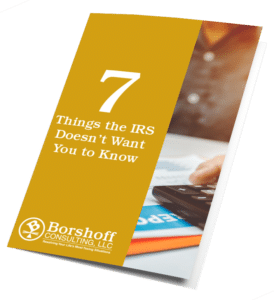According to the IRS, the most common federal tax form filed by the majority of one-owner businesses is Schedule C. It is the “Profit or Loss from Business” form. The form is used to report business income and business expenses.
Business income is any income you receive that is related to your business. It is not wages that are reported on the W-2 form. Business expenses are expenses related to your business that are both necessary and ordinary. Expenses must meet both criteria to be claimed as business expenses on your taxes.
If you have a home office, you can deduct your business direct and indirect expenses on this schedule. You can deduct direct expenses such as office supplies, equipment, and furniture. You can also deduct a portion of indirect expenses such as rent, homeowner association fees, and property taxes.
What is Schedule C?
Schedule C is a calculation worksheet called the “Profit or Loss from Business” statement. It’s the place where you enter any business income you earned during the tax year and where you deduct any business expenses you have incurred.
The result of the schedule will show either a business net income or loss amount. This amount is then reported on your tax return along with any other amount you earned from employers. Those amounts (wages) would be reported to you on the W-2 form.
Customers or clients may also give you the 1099-MISC forms. The earnings from 1099-MISC forms must be reported on your tax return as well as any cash payments you received that were not reported elsewhere.
Schedule C does not take the place of your tax return. It’s a calculation worksheet that will give you an amount to put on your tax return.
Who Uses Schedule C?
Many types of businesses use Schedule C to report their business income and expenses. Examples of taxpayers who use Schedule C are sole proprietors, single-member LLC businesses, and qualified joint ventures.
What is Business Income?
Business income is what you earn when you own and operate a business. According to the IRS, “If there is a connection between any income you receive and your business, the income is business income. A connection exists if it is clear that the payment of income would not have been made if you did not have the business.”
Business income may include income received for the making or selling of merchandise, government contract work, services rendered as an independent contractor, freelancer, or other non-employee position, and the fair market value of property or services received through bartering.
What are Business Expenses?
Expenses have to meet two requirements to be called “business expenses.” First, to be classified as a business expense, the expense must be ordinary. This means that people in your industry also must have this business expense in order to stay in business.
The second requirement for an expense to be classified as a business expense is that it must be necessary. This means that the expense was helpful or appropriate in making you money with your business.
For example, a handyman needs tools. Tools can be a business expense because they are an ordinary expense for a handyman and they are necessary for him or her to get the job done. Tools can thus go on Schedule C as a business expense.
Another example would be a freelance driver who picks up customers and drives them around for a company like Uber or Lyft. The mileage the driver incurred would be classified as a business expense, because the mileage is an ordinary and necessary expense for the driver.
However, for an Uber or Lyft driver to take the business expense of mileage, he or she will need to keep excellent records. This means keeping track of miles in a well-kept, organized mileage log. These records are crucial in the event of an audit.
Can I Claim the Home Office Deduction?
Yes! If you have a qualified home office, you most certainly can take the home office deduction. However, you must understand the rules and requirements for taking this deduction before just jumping right in.
The two basic requirements for your home office to qualify as a deduction are: (1) regular and exclusive use and (2) principal place of business. This means the portion of your home that you consider to be your home office must be exclusively used for business.
Your home must also be the main location for your business or the place where you regularly meet with clients or customers.
The home office deduction allows you to deduct certain business expenses. Some of the business expenses you may deduct are direct business expenses and indirect business expenses.
Indirect expenses include amounts spent to repair or maintain the home office. Indirect expenses include utility bills, homeowner’s insurance, homeowner’s association fees, security, and general repairs and maintenance; direct expenses could be office furniture, office equipment, and office supplies.
For a full listing of the types of expenses that you can deduct with the home office deduction, check out IRS Publication 587: Business Use of Your Home.
There are two options for calculating the home office deduction. The first is the actual expense method. It’s based on the square footage devoted to your home office as a percentage of your overall home.
For example, if your home office makes up 20% of your home, you use 20% as your rate. Now you would take 20% of your indirect expenses as one calculation, and you would take the actual amount of the direct expenses as the other amount. The total of the two is your total deduction for your home office.
So, if you had $100 of indirect expenses and $50 of direct expenses, you would deduct a total of $70 for the home office deduction. You only had 20% of the $100 in indirect expenses, so only $20 counts. Add that to the 100% of direct expenses of $50 to get a total of $70.
The second option for calculating the home office deduction is called the simplified method. This method uses a prescribed rate that you multiply by the allowable square footage of your home office. Provided your home office is 300 square feet or less, the IRS will give you up to $1,500. The rate is $5.00 per square foot of your home that is used for business purposes.
If your home office is 250 square feet and you wish to use the simplified method, you could deduct $1,250 (250 X $5.00/square foot).
What Else Do I Need to Know to File Schedule C?
The rules on what constitutes business income or what should be classified as business expenses can be confusing. Keep reading to see how we can help with Schedule C.
Some good tips that can help Schedule C filers per the IRS are:
- Practice good record-keeping.
- Keep business and personal expenses separate.
- Backup and protect your financial and tax paperwork.
- To avoid an unexpected tax bill, make quarterly estimated tax payments to the IRS. This will cover your income tax and social security self-employment tax. To make payments, deposit your funds electronically to the IRS using the EFTPS (Electronic Federal Tax Payment System).
- File Form 941: “Employer’s Quarterly Federal Tax Return” on time and pay your federal employment taxes using the EFTPS payment system.
- If your small business has employees or independent contractors, follow the tax law to classify them properly. Need help? We know the tax law at Borshoff Consulting! Contact us today for assistance.
For further assistance and information, the IRS has a resource called the Small Business and Self-Employed Tax Center. There you can find helpful tips to help you run your small business, free tax publications, and even a live, small business tax workshop or webinar you can access.
How do I File Schedule C?
You file Schedule C once a year with your taxes (1040 form) as an attachment to your tax return. The quickest, safest, and most accurate way to file is by using the e-file online or through an authorized tax professional.
A tax professional understands the tax code and how to file taxes correctly. Find an excellent tax accountant who will look out for your best interests.
Conclusion
The process of reporting business income and expenses on Schedule C may seem overwhelming at first, but it can save you money on your taxes. It’s important to follow the tax code exactly to prevent an unexpected tax bill. When it doubt, consult with a tax specialist.
If you are unsure as to whether you qualify or how much you can write off, contact Borshoff Consulting! The rules on tax deductions are often hard to digest. We can help you with every part of your taxes.
We specialize in tax returns, financial planning, and more. To see how we can help out with your tax returns, contact us today! Borshoff Consulting can help you with one-on-one audit assistance, support, and representation. You can trust Indiana’s tax expert!





